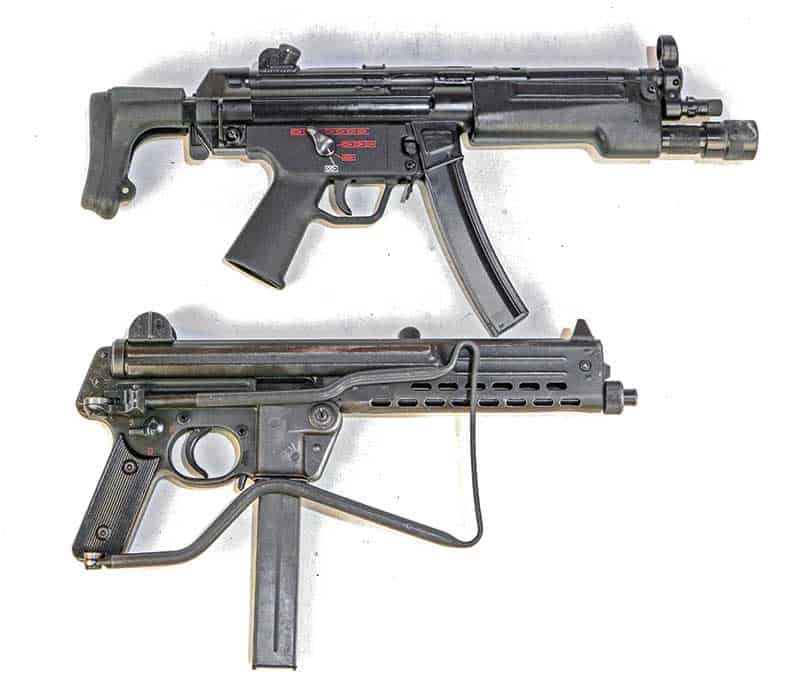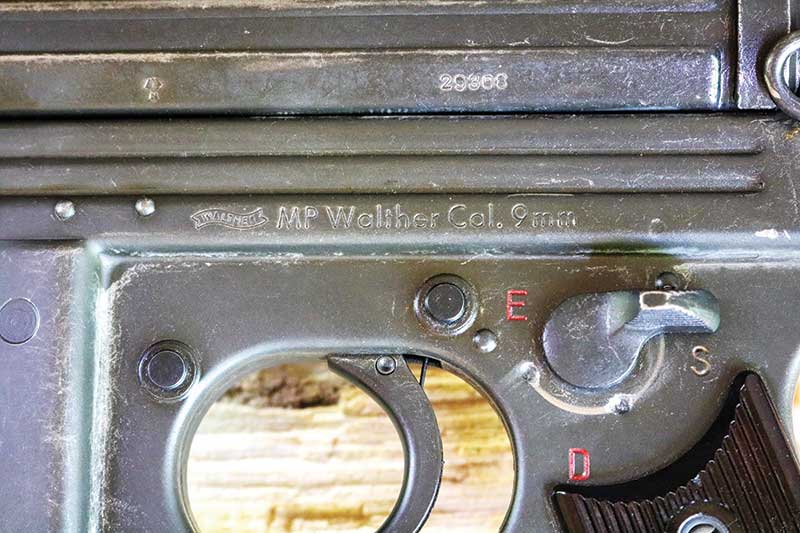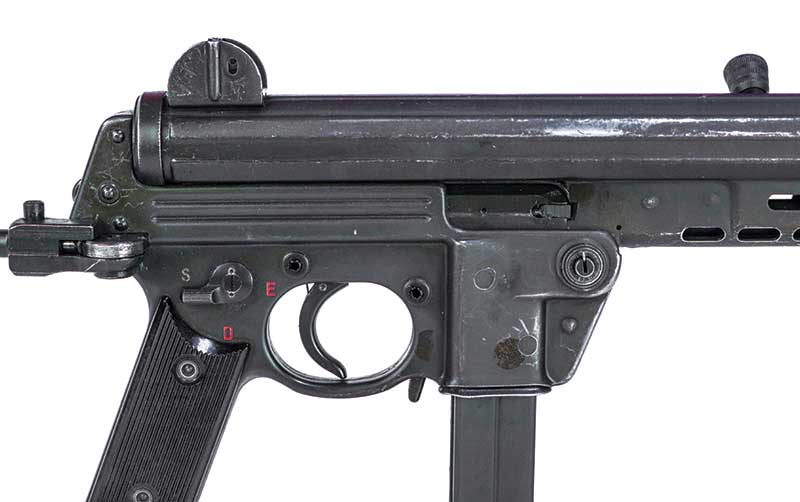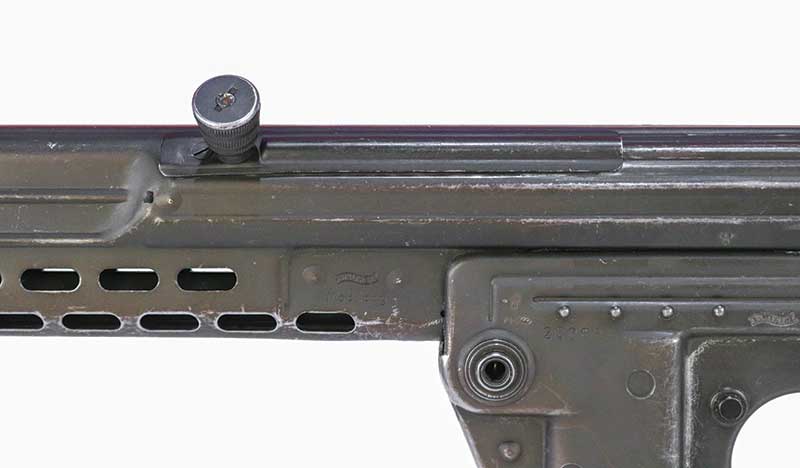The Walther MP
Walther produced the MP in West Germany from 1963 until 1985. MP stands for Maschinenpistole or “Machine Pistol” after the wartime German nomenclature for submachine guns. The MP came in broad flavors.
The MPL (“Lang”) sported a 10.2" barrel and 29.4" overall length with the stock deployed. The MPK (“Kurz”) featured a stubbier 6.8" tube and a 25.9" overall length. Both guns cycled at a sedate 550 rounds per minute.
The MP was built predominantly of pressed steel components welded in place. The side-folding stock was formed out of steel tubing and encased in a rubber coating. The bilateral fire selector was located underneath the thumb and operated a bit differently from our familiar M4. Safe is pointing backwards. The first 90-degree position is full auto, while rotating the lever through 180 degrees places the gun on semi.









